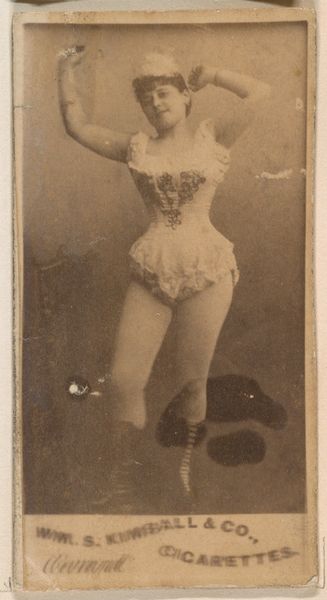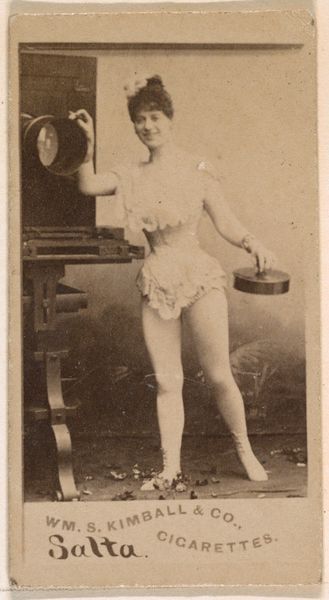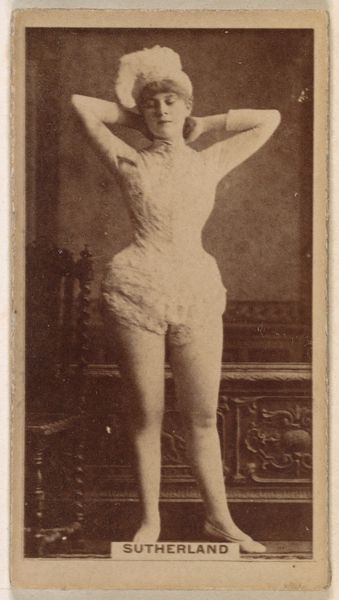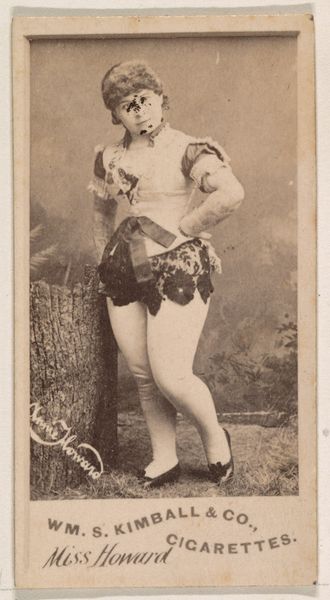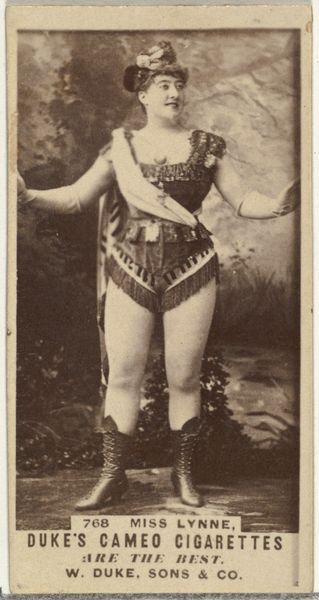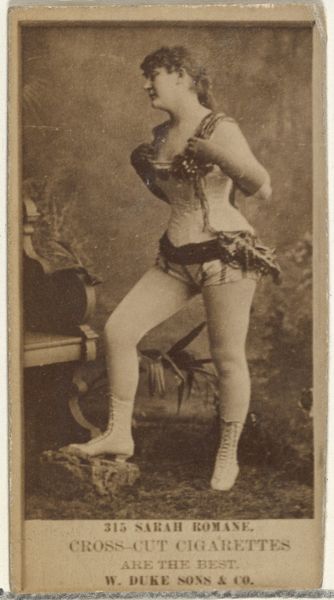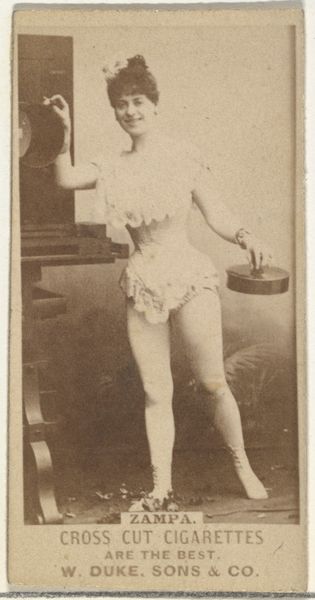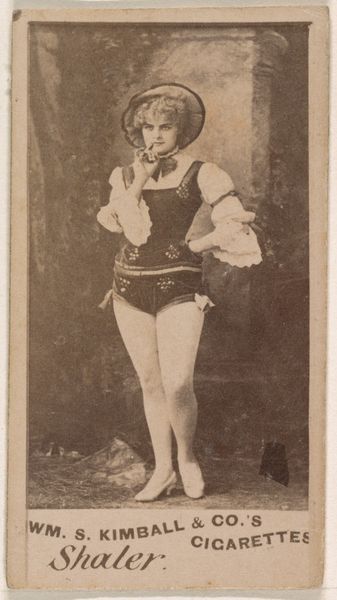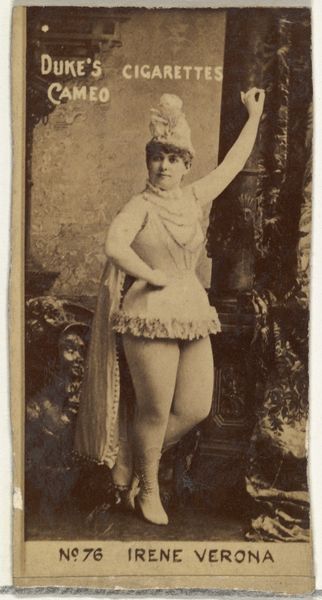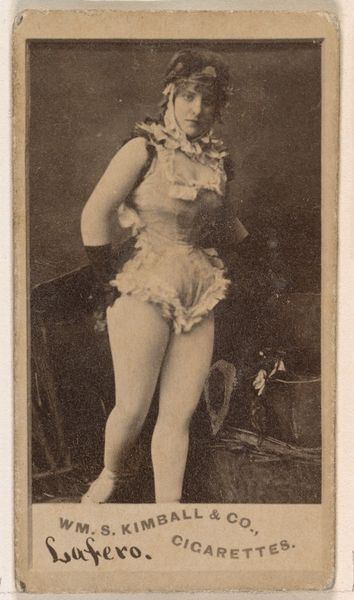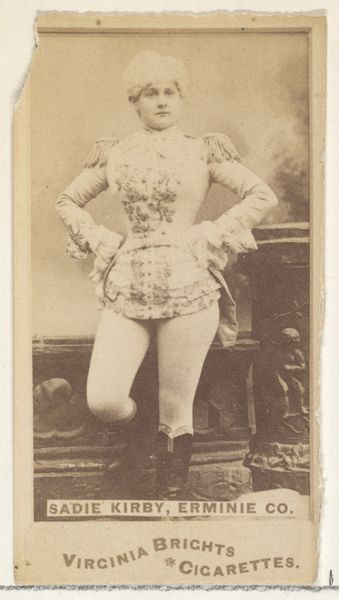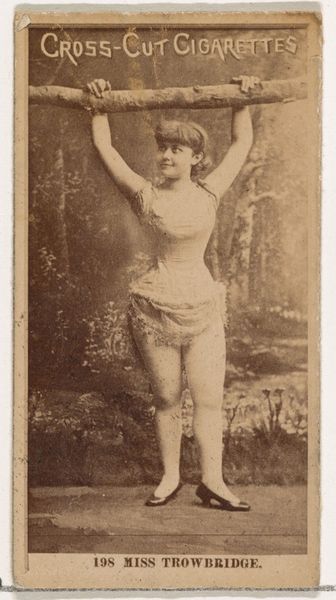
Miss Cary, from the Actresses series (N203) issued by Wm. S. Kimball & Co. 1889
0:00
0:00
drawing, print, etching, photography
#
portrait
#
drawing
# print
#
etching
#
photography
#
19th century
#
erotic-art
Dimensions: Sheet: 2 5/8 × 1 3/8 in. (6.6 × 3.5 cm)
Copyright: Public Domain
Editor: Here we have "Miss Cary, from the Actresses series," created in 1889 by William S. Kimball & Co. It’s a photographic print, almost sepia-toned, and she's wearing, well, very little. It's also a cigarette card! What strikes me is the blatant commercialization of the female form here. What’s your take on it? Curator: My eye is drawn immediately to the means of production. It’s fascinating how photography, etching and printmaking converge to create a mass-produced image tied to the consumption of tobacco. This wasn't about high art, but about marketing and the burgeoning consumer culture. What does it say about labor when we see the human form, especially a female form, being used to sell commodities? Editor: So, you’re focusing on the card itself as an object and its purpose? Curator: Precisely. Consider the card’s materiality: the paper, the ink, the photographic chemicals. Each element involved a chain of labor and resources. And what was the role of "Miss Cary" in all of this? Was she complicit, a victim, or something in between? Editor: That makes me think about the wider social context. Women, even actresses, likely had limited power then. This card embodies those power dynamics, right? Curator: Absolutely. The image flattens her into a desirable commodity, erasing any complexity. This commodification facilitated widespread consumption, making images like this cheap, accessible, and disposable. Were those considerations that crossed her mind? Editor: So it is as much about the consumption and distribution of the card, as the image within the frame itself? Curator: Exactly. It is also about whose labor makes art and who gets celebrated. The ‘actress’ on a baseball card? How different than someone who spent years mastering their skill and technique in an art studio? It’s a reframing of the very notion of artistry. Editor: I hadn’t thought of it that way before – it definitely changes how I see it now, less about ‘erotic-art’ and more about socioeconomics and commodification of women’s bodies for profit. Curator: It's a potent reminder that art doesn’t exist in a vacuum. It is produced, distributed, and consumed within a specific social and economic context. Examining those material conditions offers powerful insights.
Comments
No comments
Be the first to comment and join the conversation on the ultimate creative platform.
